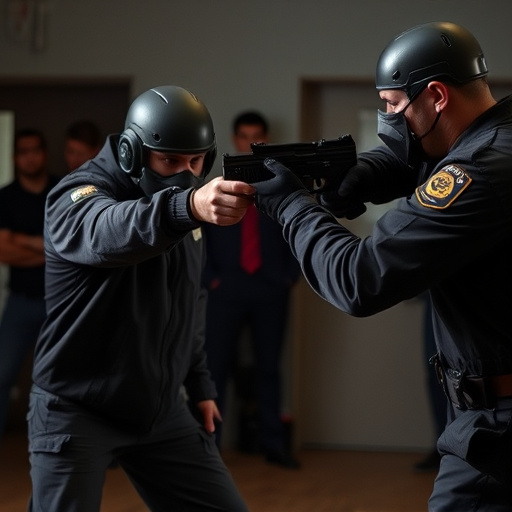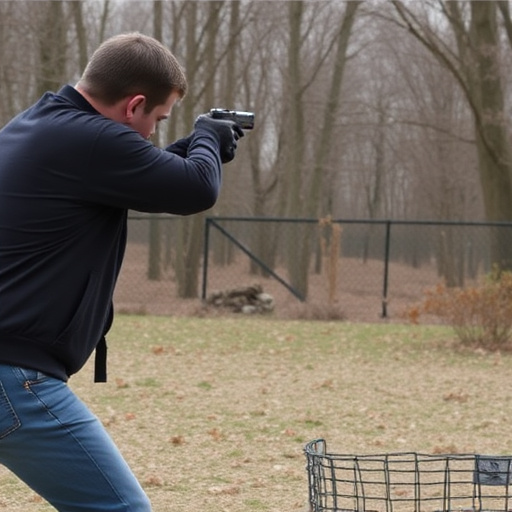Understanding voltage penetration is crucial for evaluating the effectiveness of most powerful legal stun weapons. Factors like voltage, current, duration, fabric material (with synthetic offering better conductivity), moisture content, and garment construction impact shock transmission. Thicker clothing layers significantly reduce electric current flow, emphasizing the need for situational awareness when using these devices. Designed with safety and non-lethal force in mind, most powerful legal stun weapons feature high voltage and ampere ratings to penetrate thick clothing quickly, making them safer alternatives to firearms.
Voltage penetration through thick clothing is a fascinating aspect of electric shock dynamics, with significant implications for personal safety and legal stun weapon effectiveness. This article explores how voltage can travel through diverse materials, delving into key factors influencing its penetration power. We also examine the role of the most powerful legal stun weapons, analyzing their design, energy output, and safety features in light of stringent regulations. By understanding these aspects, users can make informed choices for self-defense while adhering to legal boundaries.
- Understanding Voltage Penetration: Factors Influencing Effectiveness
- The Role of Legal Stun Weapons: Power, Safety, and Regulations
Understanding Voltage Penetration: Factors Influencing Effectiveness

Understanding Voltage Penetration: Factors Influencing Effectiveness
Voltage penetration through thick clothing is a complex phenomenon that varies based on several factors. The effectiveness of delivering a shock from a stun device depends on the voltage, current, and duration of the electrical discharge, as well as the material and thickness of the fabric barrier. High-voltage stun weapons, often considered among the most powerful legal stun devices, utilize intense electric currents to disrupt muscle control and cause temporary incapacitation. The ability of this current to penetrate clothing depends on factors like fiber composition, moisture content, and the overall construction of the garment.
For instance, synthetic materials with lower electrical resistance allow for better penetration compared to natural fibers like cotton or wool. Moisture plays a significant role as well; wet fabrics conduct electricity more efficiently than dry ones. Additionally, the thickness of the clothing is crucial; multiple layers can significantly reduce voltage transmission, making it imperative for individuals carrying legal stun weapons to be aware of their surroundings and the protective qualities of their attire.
The Role of Legal Stun Weapons: Power, Safety, and Regulations

The most powerful legal stun weapons are designed with a balance in mind—balance between delivering a strong enough electric current to incapacitate an individual and ensuring user safety. These devices operate within strict legal boundaries, governed by regulations that dictate their power output, design features, and authorized users. The focus on safety is paramount; these weapons are intended for non-lethal force applications, meaning they must comply with safety standards to minimize the risk of harm.
Regulations vary by region, but many countries allow the use of legal stun weapons for personal protection, with some models approved for law enforcement and security personnel. The most powerful among them typically feature higher voltage and ampere ratings, enabling effective penetration through thick clothing to ensure swift immobilization. Despite their power, these devices are still considered safer alternatives to firearms, as they do not carry the same level of risk associated with projectiles or high-impact force.
In understanding voltage penetration through thick clothing, it’s clear that most powerful legal stun weapons play a significant role in effective personal defense. By comprehending the factors influencing voltage transmission and the legal considerations surrounding stun devices, individuals can make informed decisions about their safety. While these tools offer a non-lethal option, responsible use and adherence to regulations are paramount to ensuring public safety and effectiveness.
